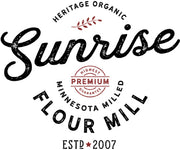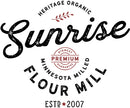Many of us like a fairly cohesive crumb to our breads. However, purists in artisan baking really want a lot of holes in the crumb. These types of breads are fun and taste wonderful… especially if you’re using them to hold cheeses and meats rather than peanut butter and jelly (although I make it work and wash my hands often).
What does it take to make these lovely holes? Highly hydrated dough. It makes desirable bread but it’s not the easiest thing to work with. It’s worth it if you take the time to do it right and keep practicing. The practice bakes taste great so don’t throw them out.
I went to my resident expert, Darrold, who has begun making ciabatta almost exclusively lately. If I could have only one bread in this world, it would be ciabatta.
Here are some of his tips for working with a highly hydrated dough:
1. Use a flexible plastic dough scraper or a bench knife when handling highly hydrated dough. It helps tremendously.
2. The better the gluten development (strength) of the dough, the easier it will be to work with. To strengthen the gluten development of your dough, you will want to do more stretch and folds or try the lamination technique. This means more time but the increased efforts will really help.
Lamination Technique: this is used to stretch the dough to build gluten strength. Spread the dough out into a very thin sheet on your countertop to help stretch and build the gluten. It is often used in place of a stretch and fold right before bulk proofing.
How to Use Lamination:
Clear the counter of flour and wet the surface.
With wet hands or oiled hands, stretch dough into a very thin rectangle- as thin as you can without tearing the dough
Let it rest a few minutes, then begin folding it back onto itself until a tight neat ball or rectangle is formed.
3. Try using your paddle attachment in your mixer rather than a dough hook. Mixing with the paddle helps incorporate all the ingredients throughout the dough rather than just the center part the hook can reach. Another option is to start with the paddle and switch to the hook once your dough has come together.
4. Warm water- Use warm water in high hydration recipes. The dough should start proofing as soon as the mixing is complete. The temperature of the flour and water should be 70-80F.
5. In order to maintain a highly hydrated dough- rather than flouring your hands and the counter top, try wetting your hands and dampening the countertop instead. Another option is oiling your hands. Darrold switches from water to flour on the countertop and hands for the final shaping.
Work your way up to higher hydration- gradual changes can help you get more comfortable and confident working with different consistencies. Remember- practice and patience are key. You have to try a few things to see what works for you (the same thing I say about all sourdough breads).
All for now,














